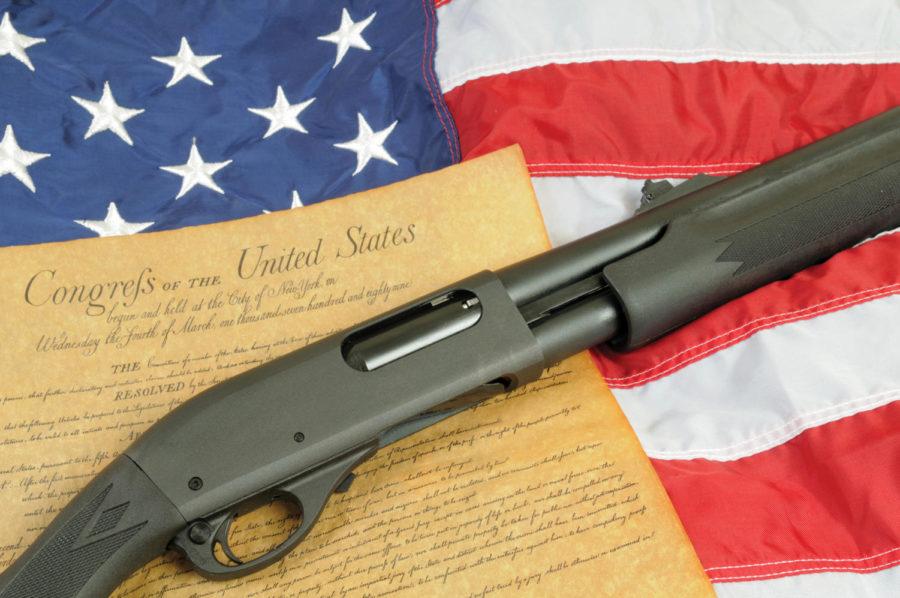Henry: Regulating guns and removing them are very different
Opinion: Henry 11/16
January 16, 2013
It’s upsetting that tragedies such as the Aurora, Colo. and Sandy Hook massacres seem to be the only events that can spark gun control discussion. The discussions get a little complicated when you throw in a person’s criminal record and mental health history. My frustration with this debate also increases because it seems to be such a partisan issue when really, compromises can be made from both sides so that politicians can come to an agreement when it comes to creating sane gun control laws for America.
Democrats want to start gun control by banning assault weapons. New York Democratic Representative Carolyn McCarthy is opposed to these types of weapons because they are the weapons most commonly used in mass shootings like Aurora and Sandy Hook. McCarthy argued that Democrats weren’t challenging the right to own guns, but rather the more lethal weapons such as assault weapons. McCarthy’s husband was among a group killed in 1993 on a New York train. An assault weapon was involved in that attack.
The Republican stance on gun control simply follows the Second Amendment: the right to bear arms. Republicans are widely in favor of the right to carry a concealed handgun. After the Aurora shooting, Republicans introduced a bill that would allow school employees with concealed weapons permits to carry firearms at work. However, the bill hadn’t been passed before the Sandy Hook tragedy and still remains in the air. Since Democrats recaptured the House, Republicans are not optimistic that such a bill can be passed.
The support for gun control laws usually increases after tragedies where guns or assault weapons are involved. For example, after the Columbine shootings, 65 percent of Americans supported laws that controlled gun ownership and 35 percent of Americans were in favor of protecting the Second Amendment rights. After the 2008 election, support for control had dropped to 45 percent and support for protecting gun owner rights had increased to 49 percent.
Taking a deeper look into the arguments on both sides, some contradictions arise. For example, President Barack Obama is protected by armed members of the Secret Service 24/7, as are the first lady, Malia, Sasha, etc. It’s absolutely necessary for the president to have armed protection. Shouldn’t all American citizens when they’re of age and have taken necessary precautions have that right? What would happen if, God forbid, we took away the president’s Secret Service? Hypothetically, if he doesn’t have his bodyguards or doesn’t have his own gun, he can’t defend himself. Interesting, isn’t it?
Access to guns is already stringent, complete with extensive health and background checks. But how will they compromise even further? Who will or won’t be allowed to apply for a concealed carry license, for example? What will constitute as a “mental illness,” and how severe will it be before those afflicted will not be allowed to own firearms?
Studies show that banning guns entirely, even if it’s just a specific type of firearm, wouldn’t really solve the problem. Eighteen studies showed that right to carry laws reduced violent crime, 10 didn’t show any effect, and zero found a bad effect from the law.
Here’s a different way of looking at things: In more than 40 of the United States, the number of motor vehicle deaths exceed the amount of gun deaths. However, if you remove suicides from those numbers, the number of motor vehicle deaths exceeds the amount of gun deaths in all 50 states. Following this logic, since death by motor vehicles far exceeds that of guns, should we begin to outlaw cars? What about all of you (myself included) who text and drive? Should we outlaw phones altogether since they impair our driving ability and become a threat to our lives?
Then people say that’s different, because texting and driving is a choice. It’s a choice to own a phone, a car, and to text and drive. That’s the beauty of America. We have freedom. The Second Amendment grants the country “a well regulated Militia being necessary to the security of a free State, the right of the people to keep and bear Arms shall not be infringed.”
The intent of the Second Amendment was to protect Americans fleeing from tyrannical Britain and provide a way for Americans to defend themselves not only from each other, but from an oppressive government. The Second Amendment is a basic Constitutional right.
If the administration at Sandy Hook Elementary had been armed, do you think a few lives would have been spared? If citizens of Aurora, Colo. had been able to safely carry a concealed weapon, would the gunman have killed so many people? There are ways to regulate without removing constitutional rights completely. Safety class, background/health checks, etc. Regulating a right isn’t the same as removing it. Taking the First Amendment as an example, fighting speech is a certain speech that isn’t protected by the First Amendment. (See Chaplinsky v. New Hampshire, where the Supreme Court came to this decision). In order for people to enjoy their constitutional rights, regulations are 100 percent necessary. It’s high time that both politicians and the American public start to realize this.
——————————————————————————————-
Katie Henry is a senior in journalism and political science from Pella, Iowa.







